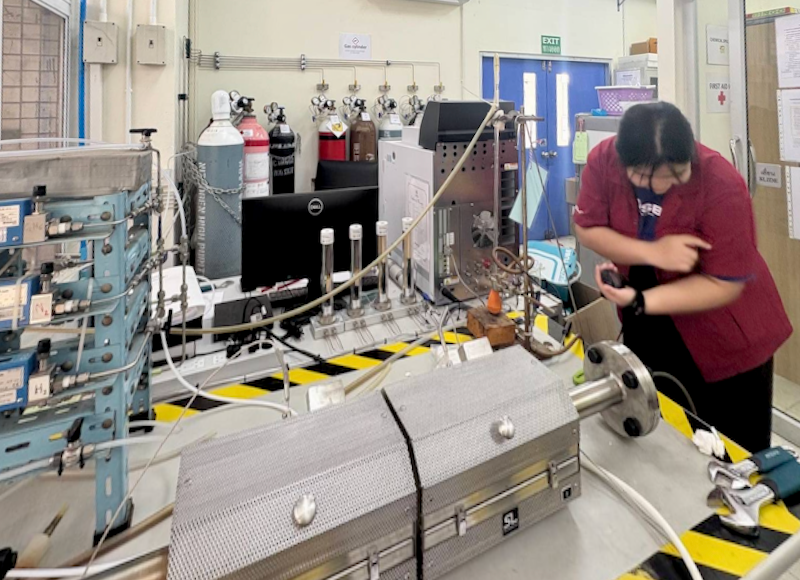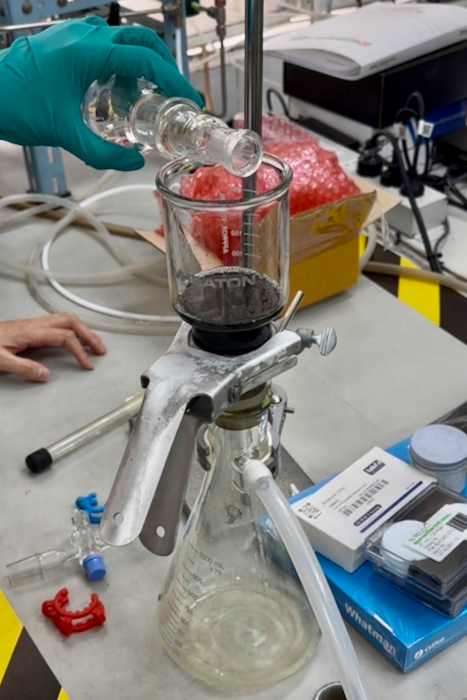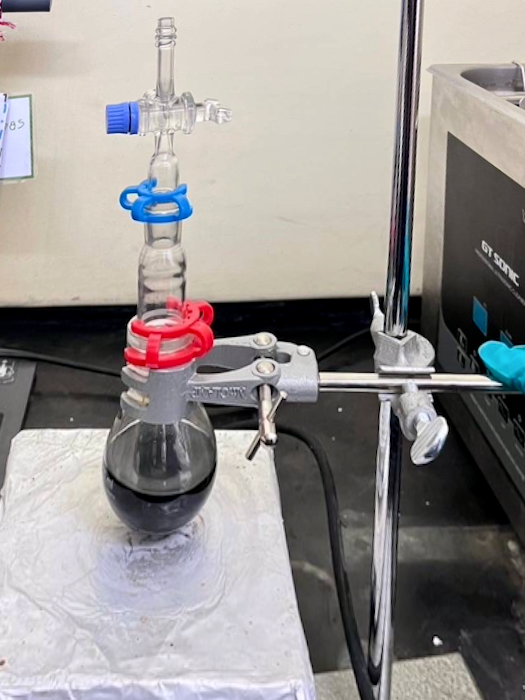eXtensions - Tuesday 17 June 2025
By Graham K. Rogers
![]()
Every engineering student in Thailand produces a final year project. Each year the Engineering Faculty displays posters of their efforts at the Prince Mahidol Hall. Several projects caught my eye this year. The winner of the Grand Prize at the event was a way to use plastic waste to produce carbon nanotubes that could detect chemicals

For the last 7 years the Faculty of Engineering has showcased senior year capstone projects with poster presentations of student work. For the last 5 years these have been held in the Prince Mahidol Hall at the University's Salaya campus. The 2 years before this, when there were restrictions on meetings due to Covid, the presentations were online.
With the wider attendance at the Prince Mahidol Hall, the two groups from each department with the best posters, present their projects live, pitching to an audience, which includes several alumni and industry experts. This year, a group from the Chemical Engineering Department was chosen as the winner of the Grand Prize for their work on developing carbon nanotubes from plastic waste to detect chemicals.
Development of Plastic Wastes-derived N-functionalized Carbon Nanotubes used as Multifunctional Fluorescent Chemosensors.
The students in the winning group:
Project advisors are Dr. Weerawut Chaiwat of the Chemical Engineering Department, at Mahidol University's Faculty of Engineering, and Dr. Sutthira Sutthasupa from the Faculty of Agro Industry, Chiang Mai University.

Energy and Green Catalysis Lab 3, Chemical Engineering Dept.
As often happens in technological developments, when one discovery builds on previous work, a group of students from the previous year had worked on a process to produce nanotubes from BTX waste (benzene, toluene, xylene). The three students in this project used a similar approach to make a probe, but worked with waste HDPE (high-density polyethylene): the sort of plastic used to make water tanks. During the process of making the 26 nm, multi-walled nanotubes, they included a catalyst and nitrogen bonded with tryptophan (an essential amino acid), which help enhance fluorescence.
In an environment that contains heavy metals such as wastewater, the fluorescent light of the probe is extinguished in the presence of certain metals, such as copper or iron. This has potential for environmental monitoring. The probe may also be used to detect biomarkers for diseases such as Parkinson's and Alzheimer's, or for detecting carcinogens.

|

|
Other biomedical uses are the detection of carbonate or bisulfide in blood. The technology can also indicate a health problem, for example potential kidney failure, which would indicate a need for medical examination. In food safety testing, the technology is able to detect the presence of melamine in milk products. This has been linked to formation of stones (bladder or kidney), and may increase the risk of bladder cancer.
The team of students intends to further improve the performance of the probe, focusing on the detection of cations, anions, and toxic compounds. They are looking toward practical applications in healthcare, environmental monitoring, and food safety.

|

|
Over the last 30 years, the engineering departments of the Faculty of Engineering have worked to develop several real and potential solutions for problems in society. Research carried out by the students and lecturers has helped develop projects for medical, social, environmental and other areas, demonstrating the responsibility that guides the Faculty of Engineering at Mahidol University.
For more information:
Department of Chemical Engineering
+66(0)2 889-2138 ext 6101-3, 6129
Headegch@mahidol.ac.th
Graham K. Rogers teaches at the Faculty of Engineering, Mahidol University in Thailand. He wrote in the Bangkok Post, Database supplement on IT subjects. For the last seven years of Database he wrote a column on Apple and Macs. After 3 years writing a column in the Life supplement, he is now no longer associated with the Bangkok Post. He can be followed on X (@extensions_th). The RSS feed for the articles is http://www.extensions.in.th/ext_link.xml - copy and paste into your feed reader.

For further information, e-mail to
Back to
eXtensions
Back to
Home Page